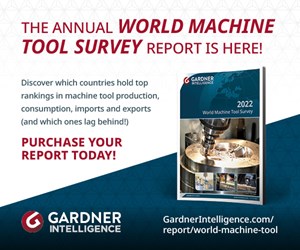Mazak Turning Machine Enables High-Volume Production of Small Parts
PMTS 2025: The Syncrex 38/9 Swiss-type turning machine features a nine-axis configuration that includes five spindle motors.
Share





Mazak spotlights its Syncrex 38/9 Swiss-type turning machine for high-volume production of small, precise parts. The Syncrex 38/9 demonstrates cutting an automotive guide plug.
The Syncrex 38/9 is designed to handle high-speed production of parts from up to 1.5" (38-mm) diameter bar stock, with a nine-axis configuration that includes five spindle motors. Shops can run full bar capacity with no special bar-end preparation, and a removable guide bushing adapter enables operators to preset the guide bushing outside the machine. The machine’s one-piece, high-damping composite casting (HDCC) base, which is said to be 10% more rigid than cast iron, lowers thermal distortion and provides vibration damping for 30% longer tool life, according to Mazak.
Mazak’s Syncrex Series machines rely on Mazatrol SmoothSt CNC with 15" touch panel and full mechanical keyboard. The control uses Mazak’s Swiss Setup Assist (MSSA) for fast and easy job setups and Mazak Turning Chip Control (MTCC) functionality. The control’s soft key PLC functions include tool touch off, part cut off, retract point and start position. Mazatrol SmoothSt also enables synchronous control, rigid tapping with all spindles and cross and front simultaneous machining.
Related Content
-
Inverting Turning and Five-Axis Milling at Famar
Automation is only the tip of the iceberg for Famar, which also provides multitasking options for its vertical lathes and horizontal five-axis machine tools.
-
Quick-Change Tool Heads Reduce Setup on Swiss-Type Turning Centers
This new quick-change tooling system enables shops to get more production from their Swiss turning centers through reduced tool setup time and matches the performance of a solid tool.
-
3 Tips to Accelerate Production on Swiss Lathes with Micro Tools
Low RPM lathes can cause tool breakage and prevent you from achieving proper SFM, but live tooling can provide an economical solution for these problems that can accelerate production.






















